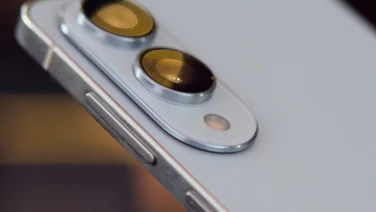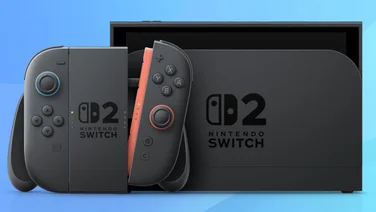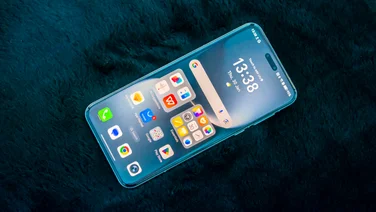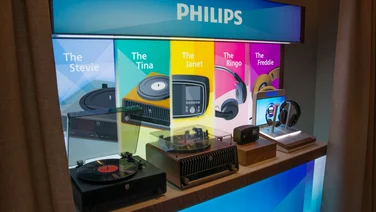News
best buy

Sony WH-1000XM6: A new standard for headphones
Sony updates its flagship headphones and improves them across the board – the WH-1000XM6 are the new king of noise-cancelling headphones
£399
-
 Samsung Galaxy S25 Edge preview: The real Slim Shady The super skinny Samsung Galaxy S25 Edge looks to be an impressive feat of engineering – but I’m not convinced the concessions are worth it
Samsung Galaxy S25 Edge preview: The real Slim Shady The super skinny Samsung Galaxy S25 Edge looks to be an impressive feat of engineering – but I’m not convinced the concessions are worth it -
 Shark's crazy new TurboBlade fan The Shark TurboBlade could revolutionise how you think about fans in your home
Shark's crazy new TurboBlade fan The Shark TurboBlade could revolutionise how you think about fans in your home -
 Henry vacuum range expands with two new XL additions The Henry Home XL and XL Xtra promise larger capacities and a wider range of tools and accessories
Henry vacuum range expands with two new XL additions The Henry Home XL and XL Xtra promise larger capacities and a wider range of tools and accessories -
 Samsung unveils bonkers new Bespoke Jet AI Ultra vacuum cleaner The Bespoke AI Jet Ultra can alert you to phone calls and switch off automatically, but promises to offer more than just gimmicks
Samsung unveils bonkers new Bespoke Jet AI Ultra vacuum cleaner The Bespoke AI Jet Ultra can alert you to phone calls and switch off automatically, but promises to offer more than just gimmicks -
 Expert Reviews Sleep Awards 2025 The best brands voted for by you, plus our favourite tried-and-tested products to invest in
Expert Reviews Sleep Awards 2025 The best brands voted for by you, plus our favourite tried-and-tested products to invest in -
 This is how much the Nintendo Switch 2 will cost you We finally know how much the Nintendo Switch 2 will cost, when it’s launching and what games you can play on day one
This is how much the Nintendo Switch 2 will cost you We finally know how much the Nintendo Switch 2 will cost, when it’s launching and what games you can play on day one -
 Amazon Spring Sale savings on our favourite Sonos soundbar The Sonos Beam Gen 2 is one of our favourite soundbars and is available at an appealing price in the Amazon Spring Sale
Amazon Spring Sale savings on our favourite Sonos soundbar The Sonos Beam Gen 2 is one of our favourite soundbars and is available at an appealing price in the Amazon Spring Sale -
 Sony’s new RGB LED TV technology could be a game changer While LG, Panasonic and Philips have been looking to revolutionise the OLED arena, Sony has been focusing on RGB LED TV innovation
Sony’s new RGB LED TV technology could be a game changer While LG, Panasonic and Philips have been looking to revolutionise the OLED arena, Sony has been focusing on RGB LED TV innovation -
 Apple's new iPad and iPad Air cost the same as last year The Apple iPad and iPad Air get worthy but uninspiring updates, but at least the prices remain the same
Apple's new iPad and iPad Air cost the same as last year The Apple iPad and iPad Air get worthy but uninspiring updates, but at least the prices remain the same -
 The new M4 MacBook Air is a fairly minor update The latest update to Apple’s MacBook Air laptop is a minor one, with a move to M3 silicon, a new sky blue colour and a lower price
The new M4 MacBook Air is a fairly minor update The latest update to Apple’s MacBook Air laptop is a minor one, with a move to M3 silicon, a new sky blue colour and a lower price -
 Honor ups the Magic 7 Pro’s software support to seven years Honor matches Samsung and Google’s seven years of software support for its Magic phones – but it’s not good news for everyone
Honor ups the Magic 7 Pro’s software support to seven years Honor matches Samsung and Google’s seven years of software support for its Magic phones – but it’s not good news for everyone -
 Expert Reviews Broadband Awards 2025: The results Discover who you voted as Britain’s best broadband provider
Expert Reviews Broadband Awards 2025: The results Discover who you voted as Britain’s best broadband provider -
 Philips reveals extensive new audio range at TP Vision Live Philips’ new range of TVs may have caught the eye at TP Vision, but it’s got lots more in store for audio fans this year
Philips reveals extensive new audio range at TP Vision Live Philips’ new range of TVs may have caught the eye at TP Vision, but it’s got lots more in store for audio fans this year